Tailspot corydoras - Corydoras caudimaculatus
Scientific name: Corydoras caudimaculatus
Common name: Tailspot corydoras
Family: Callichthyidae
Usual size in fish tanks: 4 - 5 cm (1.57 - 1.97 inch)
014
Recommended pH range: 6.3 - 7.3
Recommended water hardness: 4 - 17°N (71.43 - 303.57ppm)
0°C 32°F30°C 86°F
Recommended temperature range: 22 - 27 °C (71.6 - 80.6°F)
The way how these fish reproduce: Spawning
Where the species comes from: South America
Temperament to its own species: peaceful
Temperament toward other fish species: peaceful
Usual place in the tank: Bottom levels
Origin
Tailspot Corydoras are native to the freshwater rivers and streams of South America, primarily found in Brazil. These fish thrive in slow-moving waters with soft substrates like sand or fine gravel, where they forage for food. Their natural habitat consists of warm, tropical environments, often with dense vegetation and shaded areas that provide shelter from predators.
Food and Feeding
Tailspot Corydoras are bottom-dwellers that tend to be more active during the evening hours, making dusk the best time to feed them. They thrive on a diet that includes high-quality sinking pellets, algae wafers, and flake foods. To add variety and nutrition, you can supplement their diet with live or frozen treats like bloodworms and brine shrimp two to three times a week. These protein-rich snacks help promote healthy growth and keep them active. Ensure their food sinks to the bottom so it is easily accessible to them.
Sexing
Determining the sex of Tailspot Corydoras is relatively simple when viewed from above. Females are typically larger with a more rounded, fuller body shape compared to the slimmer, more streamlined males. The females' plumper appearance becomes more pronounced, especially when they are ready to spawn.
Breeding
Breeding Tailspot Corydoras in captivity has not been widely reported or documented. It is believed that, like other Corydoras species, they spawn in the wild, where the right conditions - such as temperature fluctuations and water changes - trigger their breeding behavior. In aquariums, providing soft water, a variety of hiding spots, and replicating natural environmental changes may encourage spawning.
Lifespan
With proper care, Tailspot Corydoras can live between 3 to 5 years in a well-maintained aquarium. Ensuring clean water, a nutritious diet, and a peaceful environment will help them live to the fullest of their lifespan.
Short Description
Tailspot Corydoras, known for their peaceful and social nature, should be kept in groups of at least five to encourage natural behavior. These small fish are bottom-dwellers, so a soft substrate, such as fine gravel or sand, is essential to protect their sensitive barbels. Providing plenty of hiding spots, like plants, driftwood, and caves, will help them feel secure and reduce stress. Their shy but active personalities make them a delightful addition to any community aquarium.
Pictures
Bought by aqua-fish.net from jjphoto.dk.





 Aspidoras
Aspidoras  Giant
Giant  Hognosed
Hognosed  Emerald
Emerald  Cascarudo
Cascarudo  Acre
Acre  Adolfo’s
Adolfo’s  Bronze
Bronze 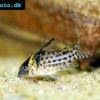 Agassizii’s
Agassizii’s  Spotted
Spotted  Skunk
Skunk  Corydoras
Corydoras 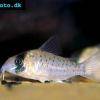 Fairy
Fairy  Corydoras
Corydoras  Pink
Pink 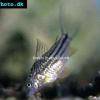 San
San  Bond’s
Bond’s  Spotted
Spotted  Concolor
Concolor  Cope’s
Cope’s 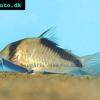 Sand’s
Sand’s  False
False  False
False 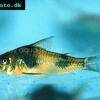 Ehrhardt’s
Ehrhardt’s  Elegant
Elegant 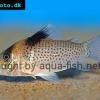 Saddle
Saddle  Fowler’s
Fowler’s  Gomezi
Gomezi 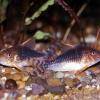 Palespotted
Palespotted 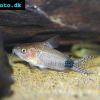 Guapore
Guapore  Dainty
Dainty  Mosaic
Mosaic  Imitator
Imitator  Julii
Julii  Leopard
Leopard 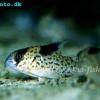 Black
Black  Slant-bar
Slant-bar  Bluespotted
Bluespotted  False
False  Bandit
Bandit  Mini
Mini 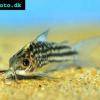 Napo
Napo  Corydoras
Corydoras 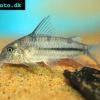 Blue
Blue  Nijssen’s
Nijssen’s 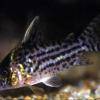 Ornate
Ornate  Peppered
Peppered  Panda
Panda  Albertini
Albertini  Pastaza
Pastaza  Corydoras
Corydoras  Many-spotted
Many-spotted  Pretty
Pretty  Dwarf
Dwarf  Iridescent
Iridescent  Reticulated
Reticulated 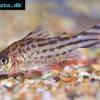 Bannertail
Bannertail  Robust
Robust  Schwartz’s
Schwartz’s  Black
Black 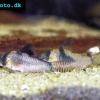 Longnosed
Longnosed  Seuss’
Seuss’  Smudge
Smudge  Masquerade
Masquerade 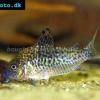 False
False  Millenium
Millenium  Pinkthroat
Pinkthroat  Sterba’s
Sterba’s  Longsnout
Longsnout  False
False  Miguelito
Miguelito 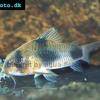 Twosaddle
Twosaddle  Xingu
Xingu 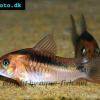 Black
Black  Porthole
Porthole  Flagtail
Flagtail  Brown
Brown  Spotted
Spotted